History Ncert Notes Class (6-12) contains – Edition = 2023-24, Pages = 200, Format = Pdf, How to Buy/Download Notes – Click Here, Buy All in One combo and Get More Discount & Benefits = Click Here
|| Content of History Ncert Notes ||
Class: 6th – Our Pasts – I
- Chapter: 1 – What, Where, How, and When?
- Chapter: 2 – From Hunting – Gathering to Growing Food
- Chapter: 3 – In the Earliest Cities
- Chapter: 4 – What Books and Burials Tell Us
- Chapter: 5 – Kingdoms, Kings, and the Early Republic
- Chapter: 6 – New Questions and Ideas
- Chapter: 7 – From a kKIngdom to Empire
- Chapter: 8 – Villages, Towns and Trade
- Chapter: 9 – New Empires and Kingdoms
- Chapter: 10 – Buildings, Paintings, and Books
Class: 7th – Our Pasts – II
- Chapter: 1 – Tracing Changes through a Thousand Years
- Chapter: 2 – New Kings and Kingdoms
- Chapter: 3 – The Delhi Sultans
- Chapter: 4 – The Mughal Empire
- Chapter: 5 – Rulers and Buildings
- Chapter: 6 – Devotional Paths to the Divine
- Chapter: 7 – The Making of Regional Cultures
- Chapter: 8 – Eighteenth-Century Political Formations
Class: 8th – Our Pasts – III
- Chapter: 1 – How, When, and Where
- Chapter: 2 – From Trade to Territory (The Company Establishes Power)
- Chapter: 3 – Ruling the Countryside
- Chapter: 4 – Tribals, Dikus, and the Vision of a Golden Age
- Chapter: 5 – When People Rebel 1857 And After
- Chapter: 6 – Civilising the “Native,” Educating the Nation
- Chapter: 7 – Women, Caste, and Reform
- Chapter: 8 – The Making of the National Movement: 1870s-1947
Class: 9th – Indian And The Contemporary World – I
- Chapter: 1 – The French Revolution
- Chapter: 2 – Socialism in Europe and the Russian Revolution
- Chapter: 3 – Nazism and the Rise of Hitler
- Chapter: 4 – Forest Society and Colonialism
- Chapter: 5 – Pastoralists in the Modern World
Class: 10th – Indian and the Contemporary World – II
- Chapter: 1 – The Rise of Nationalism in Europe
- Chapter: 2 – Nationalism in India
- Chapter: 3 – The Making of a Global World
- Chapter: 4 – The Age of Industrialisation
- Chapter: 5 – Print Culture and the Modern World
Class: 11 – Themes in World History
- Chapter: 1 – Writing and City Life
- Chapter: 2 – An Empire across Three Continents
- Chapter: 3 – Nomadic Empires
- Chapter: 4 – The Three Orders
- Chapter: 5 – Changing Cultural Traditions
- Chapter: 6 – Displacing Indigenous Peoples
- Chapter: 7 – Paths to Modernisation
Class: 12 – Themes in Indian History
- Chapter: 1 – Bricks, Bread and Bones
- Chapter: 2 – Kings Farmers and Towns (Early States and Economics)
- Chapter: 3 – Kinship Caste and Class
- Chapter: 4 – Thinker’s Belief and Buildings Culture Development
- Chapter: 5 – Through the Eyes of Travellers
- Chapter: 6 – Bhakti Sufi Traditions
- Chapter: 7 – An Imperial Capital Vijayanagara
- Chapter: 8 – Peasant Zamindars and State
- Chapter: 9 – Colonialism and Countryside
- Chapter: 10 – Rebels and the Raj
- Chapter: 11 – Mahatma Gandhi and the Nationalist Movement
- Chapter: 12 – Framing the Constitution
|| Class: 6th – Our Pasts – I | History Ncert Notes ||
Chapter: 1 – What, Where, How, and When?
- Where Did People Live?
- Names of the Land
- Finding Out About The Past
- One Past or Many?
- What Do Dates Mean?
Chapter: 2 – From Hunting – Gathering to Growing Food
- How Do We Know About Hunter-Gatherers?
- Choosing A Place to Live In
- Making Stone Tools
- Finding Out About Fire
- A Changing Environment
- The Beginnings of Farming and Herding
- A New Way of Life
- “Storing” Animals
- Finding Out About the First Farmers and Herders
- Towards A Settled Life
- What about Other Customs and Practices?
- A Closer Look- Living and Dying In Mehrgarh
Chapter: 3 – In the Earliest Cities
- The Story of Harappa
- What Was Special About These Cities
- Houses, Drains, and Streets
- Life in the City
- New Crafts in the City
- In Search Of Raw Materials
- Food for People in the Cities
- A Closer Look – Harappan Towns in Gujarat
- The Mystery of the End
Chapter: 4 – What Books and Burials Tell Us
- It one of the Oldest Books in the World
- How Historians Study the Rigveda
- Cattle, Horses, and Chariots
- Words to Describe People
- Silent Sentinels-The Story of the Megaliths
- Finding Out About Social Differences?
- Were Some Burial Spots Meant For Certain Families?
- A Special Burial at Inamgaon
- Occupations at Inamgaon
Chapter: 5 – Kingdoms, Kingsand the Early Republic
- How Some Men Became Rulers
- Janapadas
- Mahajanapadas
- Taxes
- Changes in Agriculture
- A Closer Look- Magadha
- A Closer Look – Vaji
Chapter: 6 – New Questions and Ideas
- The Story of Buddha
- Upanishads
- Jainism
- The Sangha
- Monasteries
Chapter: 7 – From a Kingdom to an Empire
- A Very Big Kingdom = an Empire
- How Are Empires Different From Kingdoms?
- Ruling the Empire
- Ashoka, a Unique Ruler
- Ashoka’s War in Kalinga
- What Was Ashoka’s Dhamma?
Chapter: 8 – Vital Villages, Thriving Towns
- Iron Tools and Agriculture
- Other Steps to Increase Production: Irrigation
- Who Lived In The Villages?
- Find Out About Cities: Stories, Travellers, Sculpture, and Archaeology
- Coins
- Cities with Many Functions
- Crafts and Crafts Persons
- A Closer Look – Arikamedu
Chapter: 9 – New Empires and Kingdoms
- Prashant and What They Tell Us
- Samudragupta’s Prashasti
- Genealogies
- Harshavardhana and the Harshacharita
- The Pallavas, Chalukyas, and Pulakeshin’s Prashasti
- How Were These Kingdoms Administered?
- A New Kind of Army
- Assemblies in the Southern Kingdoms
- Ordinary People in the Kingdoms
Chapter: 10 – Buildings, Paintings, and Books
- The Iron Pillar
- Buildings in Brick and Stone
- How Were Stupas And Temples Builts?
- Paintings
- The World of Books
- Recording and Preserving Old Stories
- Stories Told By Ordinary People
- Writing Books on Science
|| Class: 7th – Our Pasts – II | History Ncert Notes ||
Chapter: 1 – Tracing Changes through A Thousand Years
- New and Old Terminologies
- Historians and Their Sources
- New Social and Political Groups
- Region and Empire
- Old and New Religions
- Thinking About Time and Historical Periods
Chapter: 2 – New Kings and Kingdoms
- The Emergence of New Dynasties
- Administration in the Kingdoms
- Prashant and Land Grants
- Warfare for Wealth
- A Closer Look: The Cholas
Chapter: 3 – The Delhi Sultans
- Findings Out About the Delhi Sultans
- From Garrison Town to Empire: The Expansion of the Delhi Sultanate
- The Masjid
- A Closer Look: Administration and Consolidation under the Khaljis and Tughluqs
- The Sultanate in the Fifteenth and Sixteenth Centuries
Chapter: 4 – The Mughal Empire
- Who Were The Mughals?
- Mughal Military Campaigns
- Mughal Traditions of Succession
- Mughal Relations with Other Rulers
- Mansabdars and Jagirdars
- Zabt and Zamindars
- A Closer Look: Akbar’s Policies
- The Mughal Empire in the Seventeenth Century and After
Chapter: 5 – Tribes, Nomads, and Settled Communities
- Beyond Big Cities: Tribal Societies
- Who Were Tribal People?
- How Nomads and Mobile People Lived
- Changing Society: New Castes and Hierarchies
- A Closer Look
- Conclusion
Chapter: 6 – Devotional Paths to the Divine
- The Idea of a Supreme God
- A New Kind of Bhakti in South India- Nayanars and Alvars
- Philosophy and Bhakti
- Basavanna’s Virashaivism
- The Saints of Maharashtra
- Nathpanthis, Siddhas, and Yogis
- Islam and Sufism
- New Religious Developments in North India
- A Closer Look: Kabir
- A Closer Look: Baba Guru Nanak
Chapter: 7 – The Making of Regional Cultures
- The Cheras and the Development of Malayalam
- Rulers and Religious Traditions: The Jagannatha Cult
- The Rajputs and Traditions of Heroism
- Beyond Regional Frontiers: The Story Of Kathak
- Painting for Patrons: The Tradition of Miniatures
- A Closer Look: Bengal
- Pirs and Temples
- Fish as Food
Chapter: 8 – Eighteenth-Century Political Formations
- The Crisis of the Empire and the Later Mughals
- The emergence of New States
- The Old Mughal Provinces
- The Watan Jagirs of the Rajputs
- Seizing Independence
|| Class: 8th – Our Pasts – III | History Ncert Notes||
Chapter: 1 – How, When, and Where
- How Important Are Dates?
- How Do We Know?
Chapter: 2 – From Trade to Territory (The Company Establishes Power)
- East India Company Comes East
- Company Rule Expands
- Setting Up a New Administration
- Conclusion
Chapter: 3 – Ruling the Countryside
- The Company Becomes the Diwan
- Crops for Europe
- The “Blue Rebellion” And After
Chapter: 4 – Tribals, Dikus, and the Vision of a Golden Age
- How Did Tribal Groups Live?
- How Did Colonial Rule Affect Tribal Live?
- A Closer Look
Chapter: 5 – When People Rebel 1857 And After
- Policies and the People
- A Mutiny Becomes a Popular Rebellion
- The Company Fights Back
- Aftermath
Chapter: 6 – Civilising the “Native,” Educating the Nation
- How the British Saw Education
- What Happened To The Local Schools?
Chapter: 7 – Women, Caste, and Reform
- Working towards Change
- Caste and Social Reform
Chapter: 8 – The Making of the National Movement: 1870-1947
- The Emergence of Nationalism
- The Growth of Mass Nationalism
- The March to Dandi
- Quit India and Later
|| Class: 9th – Indian And The Contemporary World – I | History Ncert Notes||
Chapter: 1 – The French Revolution
- French Society during the Late 18th Century
- The Outbreak of the Revolution
- France Abolishes Monarchy and Becomes A Republic
- Did Women Have A Revolution?
- The Abolition of Slavery
- The Revolution and Everyday Life
Chapter: 2 – Socialism in Europe and the Russian Revolution
- The Age of Social Change
- The Russian Revolution
- The February Revolution in Petrograd
- What Changed After October?
- The Global Influence of the Russian Revolution and the USSR
Chapter: 3 – Nazism and the Rise of Hitler
- Birth of the Weimar Republic
- Hitler’s Rise to Power
- The Nazi Worldview
- Youth in Nazi Germany
- Ordinary People and Crimes against Humanity
Chapter: 4 – Forest Society and Colonialism
- Why Deforestation?
- The Rise of Commercial Forestry
- Rebellion in the Forest
- Forest Transformation in Java
Chapter: 5 – Pastoralists in the Modern World
- Pastoral Nomads and Their Movements
- Colonial Rule and Pastoral Life
- Pastoralism in Africa
|| Class: 10th – Indian and the Contemporary World – II | History Ncert Notes||
Chapter: 1 – The Rise of Nationalism in Europe
- The French Revolution and the Idea of the Nation
- The Making of Nationalism in Europe
- The Age of Revolutions: 1830-1848
- The Making of Germany and Italy
- Visualizing the Nation
- Nationalism and Imperialism
Chapter: 2 – Nationalism in India
- The First World War, Khilafat and Non-Cooperation Movement
- Differing Strands within the Movement
- Towards Civil Disobedience
- The Sense of Collective Belonging
Chapter: 3 – The Making of a Global World
- The Pre-Modern World
- The Nineteenth Century (1815-1914)
- The Inter-War Economy
- Rebuilding a World Economy: The Post-War Era
Chapter: 4 – The Age of Industrialisation
- Before The Industrial Revolution
- Hand Labour and Steam Power
- Industrialization in the Colonies
- Factories Come Up
- The Peculiarities of Industrial Growth
- Market for Goods
Chapter: 5 – Print Culture and the Modern World
- The First Printed Books
- Print Comes To Europe
- The Print Revolution and Its Impact
- The Reading Mania
- The Nineteenth Century
- India and the World of Print
- Religious Reform and Public Debates
- New Forms of Publication
- Print and Censorship
|| Class: 11 – Themes in World History | History Ncert Notes ||
Chapter: 1 – Writing and City Life
- Mesopotamia and Its Geography
- The Significance of Urbanisation
- Movement of Goods into Cities
- The Development of Writing
- System of Writing
- Literacy
- The Uses of Writing
- Urbanization in Southern Mesopotamia: Temples and Kings
- Life in the City
- A Trading Town in a Pastoral Zone
- Cities in Mesopotamian Culture
- The Legacy of Writing
Chapter: 2 – An Empire across Three Continents
- The Early Empire
- The Third-Century Crisis
- Gender, Literacy, Culture
- Economic Expansion
- Controlling Workers
- Social Hierarchies
- Late Antiquity
Chapter: 3 – Nomadic Empires
- Introduction
- Social and Political Background
- The Career of Genghis Khan
- The Mongols after Genghis Khan
- Social, Political, and Military Organisation
- Conclusion: Situating Genghis Khan Mongolia in World History
Chapter: 4 – The Three Orders
- Introduction
- France and England
- The Three Orders
- The Second Order: The Nobility
- The Manorial Estate
- The Knights
- The First Order: The Clergy
- Monks
- The Church and Society
- The Third Order: Peasants, Free and Unfree
- Factors Affecting Social and Economic Relations.
- A ‘Fourth Order’ – New Towns and Townspeople
- Cathedral – Towns
- The Crisis of the Fourteenth Century
- Social Unrest
- Political Changes
Chapter: 5 – Changing Cultural Traditions
- The Humanist View of History
- The Revival of Italian Cities
- The Arab’s Contribution
- Aspirations of Women
- Debate within Christianity
Chapter: 6 – Displacing Indigenous Peoples
- European Imperialism
- North America
- Mutual Perceptions
- The Native Peoples Lose Their Land
- The Gold Rush and Growth of Industries
- Constitutional Rights
- Winds of Change
- Australia
- The Winds of Change
Chapter: 7 – Paths to Modernisation
- Introduction
- Japan
- The Meiji Restoration
- Modernizing the Economy
- Aggressive Nationalism
- ‘Westernisation’ and ‘Tradition’
- After Defeat: Re-Emerging As a Global Economic Power
- China
- Establishing the Republic
- The Rise of the Communist Party of China
- Establishing the New Democracy 1949-65
- Conflicting Visions: 1965-78
- Reforms From 1978
- The Story of Taiwan
- The Story of Korea
- A Post-War Nation
- Rapid Industrialisation under Strong Leadership
- Continued Economic Growth and Calls for Democratisation
- Korean Democracy and the IMF Crisis
- Two Roads to Modernisation
|| Class: 12 – Themes in Indian History | History Ncert Notes ||
Chapter: 1 – Bricks, Bread, and Bones
- Beginnings
- Subsistence Strategies
- Mohenjodaro: A Planned Urban City
- Tracking Social Differences
- Craft Production
- Strategies for Procuring Material
- Seals, Script, Weights
- Ancient Authority
- The End of the Civilisation
- Discovering the Harappan Civilisation
- Problems of Piecing Together The Past
Chapter: 2 – Kings Farmers and Towns (Early States and Economics)
- Prinsep and Piyadassi
- The Earliest States
- An Early Empire
- New Notions of Kingship
- A Changing Countryside
- Towns and Trade
- Back To Basics How Are Inscriptions Deciphered?
- Limitations
Chapter: 3 – Kinship Caste and Class
- The Critical Edition of the Mahabharata
- Kinship and Marriage Many Rules and Varied Practices
- Social Differences: Within and Beyond the Framework of Caste
- Beyond Birth Resources and Status
- Explaining Social Differences: A Social Contract
- Handling Texts Historians and the Mahabharata
- A Dynamic Text
Chapter: 4 – Thinker’s Belief and Buildings Culture Development
- A Glimpse of Sanchi
- The Background: Sacrifices and Debates
- Beyond Wordly Pleasures: The Message Of Mahavira
- The Buddha and the Quest for Enlightenment and Teachings
- Stupas
- Sculpture
- New Religious Traditions
- Top of Form
Chapter: 5 – Through the Eyes of Travellers
- Al-Biruni and the Kitab-Ul-Hind
- Ibn Battuta’s Rihla
- Francois Bernier A Doctor With a Difference
- Making Sense of an Alien World: Al-Biruni and the Sanskritic Tradition
- The Excitement of the Unfamiliar
- Bernier and the “Degenerate” East
- Women Slaves, Sati, and Labourers
Chapter: 6 – Bhakti Sufi Traditions
- A Mosaic of Religious Beliefs and Practices
- Poems of Prayers Early Traditions of Bhakti
- The Virashaiva Tradition in Karnataka
- Religious Ferment in North India
- New Strands in the Fabric Islamic Traditions
- The Growth of Sufism
- The Chishtis in the Subcontinent
- New Devotional Paths Dialogue and Dissent in Northern India
- Reconstructing Histories of Religious Traditions
- Top of Form
Chapter: 7 – An Imperial Capital Vijayanagara
- The Discovery of Hampi
- Rayas, Nayakas and Sultans
- Vijayanagara – The Capital and Its Environs
- The Royal Centre
- The Sacred Centre
- Plotting Palaces, Temples, and Bazaars
- Questions In Search Of Answers
- Top of Form
Chapter: 8 – Peasant Zamindars and State
- Peasants and Agricultural Production
- The Village Community
- Women in Agrarian Society
- Forests and Tribes
- The Zamindars
- Land Revenue System
- The Flow of Silver
- The Ain-I Akbari of Abu’l Fazl Allami
Chapter: 9 – Colonialism and Countryside
- Bengal and the Zamindars
- The Hoe and the Plough
- A Revolt in the Countryside: The Bombay Deccan
- The Deccan Riots Commission
- Top of Form
Chapter: 10 – Rebels and the Raj
- A pattern of the Rebellion
- Awadh in Revolt
- What the Rebels Wanted
- Repression
- Images of the Revolt
- Top of Form
Chapter: 11 – Mahatma Gandhi and the Nationalist Movement
- A Leader Announces Himself
- The Making and Unmaking Of Non-Cooperation
- The Salt Satyagraha (A Case Study)
- Quit India
- The Last Heroic Days
- Knowing Gandhi
- Top of Form
Chapter: 12 – Framing the Constitution
- A Tumultuous Time
- The Vision of the Constitution
- Defining Rights
- The Powers of the State
- The Language of the Nation
|| About the History Ncert Notes Class (6-12) Book ||
For history, the Ncert Notes Indian History Class 6-12 Pdf textbooks from classes 6 to 12 are particularly valuable. Here’s a brief overview of what each class covers:
- Class 6: Ancient India – Covers the earliest civilizations in the Indian subcontinent, including the Indus Valley Civilization, Vedic Period, and early empires like the Mauryas and Guptas.
- Class 7: Medieval India – Focuses on the medieval period in Indian history, including the rise and fall of empires like the Delhi Sultanate, the Mughal Empire, and the Vijayanagara Empire.
- Class 8: Modern India – Covers the period from the arrival of Europeans in India to the Indian independence movement, including the establishment of British rule, social reforms, and the struggle for independence.
- Class 9: Contemporary World History – Provides an overview of world history from the late 18th century to the present, including the French Revolution, Industrial Revolution, World Wars, and the Cold War.
- Class 10: India and the Contemporary World – Focuses on India’s struggle for independence, post-independence challenges, and the world history events during the 20th century.
- Class 11: Ancient, Medieval, and Modern History – Offers a comprehensive study of Indian history from ancient to modern times, covering topics such as the early societies, medieval kingdoms, and the emergence of modern India.
- Class 12: Themes in Indian History – Part 1 and Part 2 – Provides an in-depth analysis of specific themes in Indian history, including cultural developments, political movements, and economic changes.
|| T0 Buy Ncert Notes Combo Offer ||
- An Introduction to Indian Art Ncert Notes
- Ancient History Tamilnadu Board Notes
- Ancient India Old Ncert Notes
- Economy Ncert (9-12) Notes
- Geography Ncert Class (6-12) Notes
- Medieval History Tamilnadu Board Ncert Notes
- Medieval History Old Ncert Notes
- Modern History Old Ncert Notes
- Political Science Ncert Notes Class (6-12)
- Science Ncert Notes class (6-12)
- History Ncert Notes class (6-12)
- The Story of Civilization Ncert Notes by Arjun Dev
- Sociology Ncert Class (11-12) Notes
To Buy only Ncert Notes Combo – Click Here
|| T0 Buy All In One Combo Offer Notes ||
- For Year = 2024
- Formats = Pdfs
- Language = English
- Get extra 10% off, use code – Allinone10
- Ncert Notes = An Introduction to Indian Art | Ancient History Tamilnadu Board | Ancient India Old Ncert | Economy Ncert (9-12) | Geography Ncert Class (6-12) | Medieval History Tamilnadu Board | Medieval History Old Ncert | Modern History Old Ncert | Political Science Ncert Class (6-12) | Science Ncert class (6-12) | History Ncert class (6-12) | The Story of Civilization Ncert by Arjun Dev | Sociology Ncert class (11-12) |.
- Mains Notes = Art and Culture Nitin Singhania | GC Leong Latest Edition | Environment Shankar Ias | Ethics Lexicon | Indian Polity M.Laxmikanth | Indian Society Topic Wise |Internal Security Ashok Kumar IPS | Modern History Spectrum | Science and Tech Ravi P Agrahari | Indian Economy Ramesh Singh |.
- Ghatna Chakra Prelims Pointer = Environment | General Science | Geography | History | Indian Polity & Governance |Economy |.
- Extra Addon = 2nd ARC Reports Notes | How To Plan Your Study | How to Top UPSC: Strategies for Effective Preparation | Quotation Book | Ultimate Guide to Master Answer Writing: Techniques for Brilliance | UPSC Syllabus and How to Cover it Efficiently |.
- Ncert Edition = 2023-24
- Pointer Edition = 2023
- Give BoostUP in Your = UPSC and State PCS Preparation
- Get free updated notes under = 1 Year
- How to Buy/Download Notes – Click Here
- How to get the Updated Notes – Click Here

![1 History Ncert Notes Class (6-12) For UPSC 2024 [PDF]](https://upscsummarynotes.com/wp-content/uploads/2023/06/1-5.webp)
![2 History Ncert Notes Class (6-12) For UPSC 2024 [PDF]](https://upscsummarynotes.com/wp-content/uploads/2023/06/2-5.webp)

















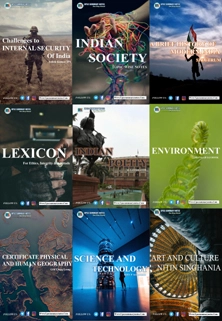

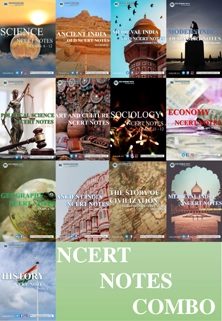
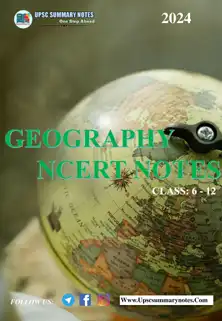
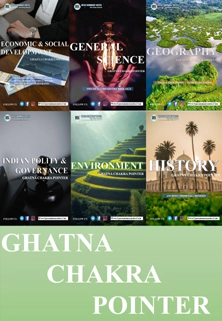
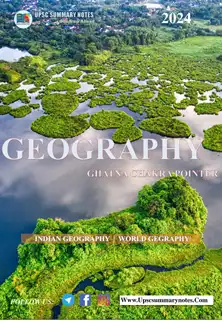

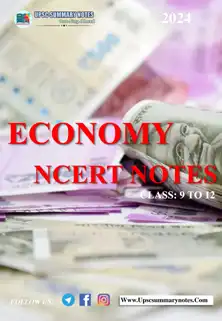
Rohan Surve –
I like this notes because its contents is good.
Ram Mohan –
Very eye catching with images
Manisha Pasa –
helpful for mains too. Thanks
Aman Kumar –
Good notes Good websites
Chirag Mitra –
You can understand each and every concept very easily! For me, it was a one-go process! After reading the chapter only once I was able to solve the questions very easily! Thank you